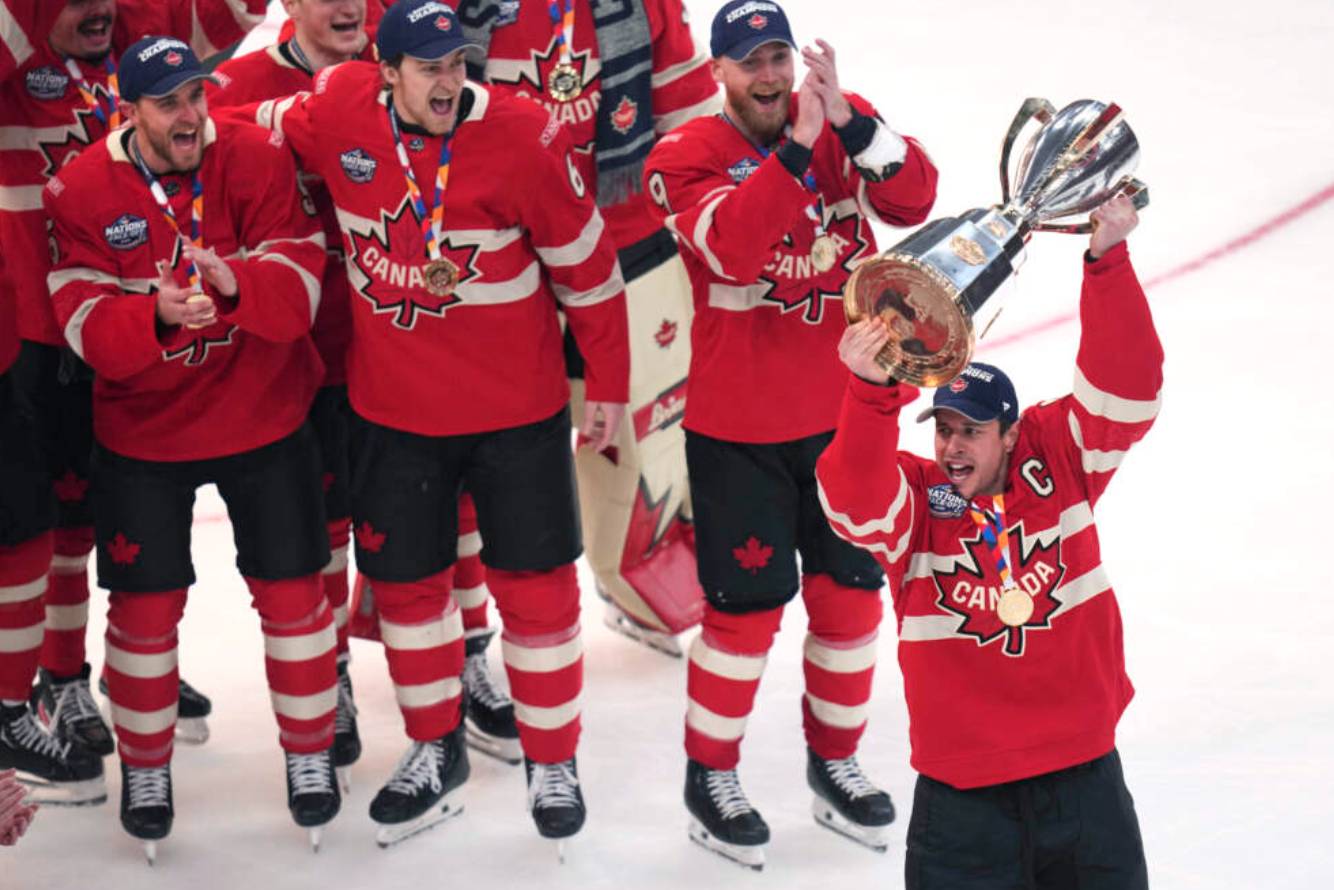
Credit: Charles Krupa/AP
How Did the Four Nations Tournament Grow the Game of Hockey?
Published: Wednesday, February 26, 2025
by Jeremy Son
In the United States, the NHL has long struggled to match the viewership of the MLB, NBA, and NFL. However, the Four Nations Face-Off tournament has brought new excitement to the sport. The gold medal game between Team USA and Canada drew over 16 million viewers across North America, surpassing the NBA All-Star Game’s 4.7 million viewers. This event proved that international competition could reignite interest in hockey, and may mark the beginning of a golden era for the sport.
The success of the Four Nations Face-Off is evident across all metrics: television ratings, ticket sales, fan engagement, and on-ice action. It has not only entertained but has also set the stage for a more elite international play. In 2026, NHL players will return to the Olympics for the first time since 2014, with 12 nations competing. Additionally, the World Cup of Hockey is set to return in 2028 with at least eight teams.
Team USA Head Coach Mike Sullivan compared the impact of this tournament to the 1980 ‘Miracle on Ice,’ emphasizing its potential to inspire the next generation. Team Canada’s Head Coach Jon Cooper echoed this sentiment, stating that the true victory is motivating young boys and girls to pick up the sport. Sidney Crosby highlighted the importance of structured international tournaments, saying, “For fans to know they’re going to see best-on-best, I think it’s great for everybody.”
The Four Nations Faceoff Tournament has also exposed the declining competitiveness of the NBA’s All-Star Game, where players lack motivation. P.K. Subban criticized NBA stars for failing to give maximum effort, arguing that they owe their best to fans who pay high ticket prices.
LeBron James skipping the game last-minute further fueled disappointment. While comparing an international tournament to an exhibition game isn’t entirely fair, the NHL’s commitment to competitive play has set a higher standard.
Despite its success, the Four Nations Face-Off isn’t without challenges. Injuries during the tournament impacted NHL teams, with Shea Theodore and Charlie McAvoy suffering setbacks that may affect their respective teams' playoff pushes. Balancing international play with NHL commitments remains a key issue.
Looking long-term, hockey faces obstacles in youth participation, particularly due to cost and accessibility. In Canada, youth hockey enrollment has dropped by 35% since 2010. The high price of equipment, ice time, and travel makes it difficult for families to commit. Competitive hockey can cost anywhere from $4,000 to $10,000 per season, pushing many toward more affordable sports like soccer and basketball. The lack of available ice rinks also contributes to the problem.
Programs like the NHL/NHLPA First Shift and Scotiabank’s Hockey for All aim to make hockey more affordable and inclusive. These initiatives provide equipment and financial assistance to lower-income families, helping to sustain the sport’s future. However, more investment in community rinks and grassroots programs is needed to make hockey accessible for all.
The Four Nations Face-Off has proven that hockey can captivate audiences on a global scale. While financial and accessibility challenges remain, the excitement generated by this tournament is a catalyst for the growth of the sport. If the NHL and hockey organizations continue to foster competitive international play while addressing youth participation barriers, the game can thrive for generations to come.
Jeremy Son can be reached at jeremy.son@student.shu.edu.Posted in: sports,

